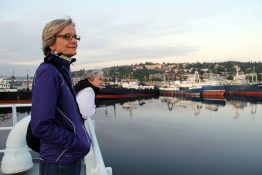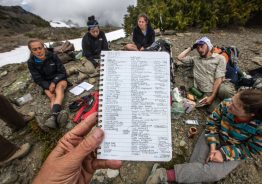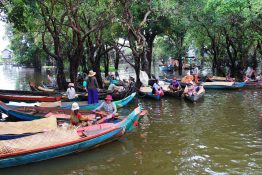Inspired by Sarah Reichard's commitment to engagement, College of the Environment Dean Lisa J. Graumlich outlines her goals for the new academic year.
Read more »NSF award to launch citizen science initiative across Pacific Rim
What if every coastal community along the entire Pacific Rim were involved in monitoring their local marine environment, and all of that data were brought together in one place? Imagine, for example, if residents in Long Beach, Washington, could submit information about seabirds they observe, then look up bird data from another coastal community in southeast Alaska to compare notes. Think about the possibilities if new data were combined with traditional knowledge to bound climate impacts, or if local knowledge contributed to oceanography.
Read more at UW Today »10 UW Environment stories you may have missed over the summer
At the conclusion of a long and arduous academic year, many students look forward to the rest and relaxation that comes with summertime. But while many are enjoying the glorious downtime of a few months without classes, others — faculty, undergrads, graduate students and postdocs — are in the field and in labs pushing their research forward. The summer of 2016 was no different.
Read more »Missing fish catch data? Not necessarily a problem, new study says
Recording how many fish are caught is one important requirement to measure the well-being of a fish stock — if scientists know the number of fish taken from the ocean, they can adjust management of that fishery to keep it from being overfished. Missing catch data, however, are rampant, causing concern that fisheries around the world are overfished. A new study by University of Washington scientists finds that in many cases, this isn’t true.
Read more at UW Today »UW scientist helping direct NASA field study of clouds off Namibia
Tiny aerosol particles, emitted by everything from tailpipes to trees, float above us reflecting sunlight, seeding clouds and absorbing solar heat. How exactly this happens — and how it might change in the future — is one of the biggest uncertainties in how humans are influencing climate. University of Washington scientists are part of a NASA field campaign, Observations of Aerosols Above Clouds and their Interactions, or ORACLES, that is flying research planes around clouds off the coast of Namibia to see how smoke and clouds interact.
Read more at UW Today »





